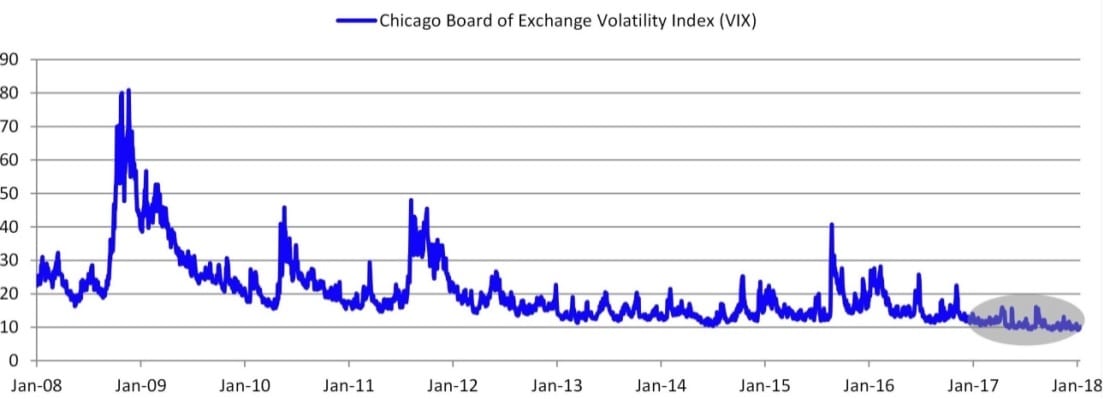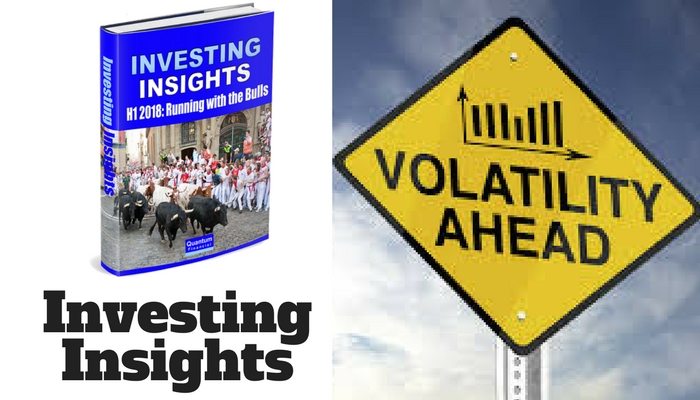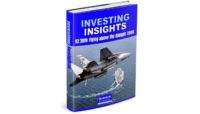If you’re worried about recent market volatility, read on.
15 years ago when I was a research analyst periods of market volatility were absolute hell. The phone would ring red hot with fund manager after hedge fund manager after fund manager demanding to know what the hell was going on in this stock or that stock.
They were concerned about their positions of tens of millions or more in pounds or euros in shares that I had recommended they buy. Internally, the banks own traders wanted to know what direction shares would go so they could place their opening positions. It was hectic and exhilarating.
Loudly and in no uncertain terms they all demanded answers of me and my colleagues. In turn, we’d quickly re-run our DCF (discounted cash flow) models and demanded answers from the companies’ finance directors or CEOs.
The trading floor went nuts with activity and wild fire rumours drove markets as much as facts did. It was a high pressure, high stakes environment that felt like a casino. Double up or double down – no one really cared as long as you just made a call with conviction and you did something.
While it was certainly exciting and to see your views respectfully reported the next day in the Financial Times as accepted truth, in all honesty it was not a great example of cool, calm, rational decision making.
Fast forward 15 years to today and now when markets go into their regular conniptions our phones largely remain silent. We still receive the odd call from a concerned client seeking reassurance but very rarely are they panicked.
Now you may be asking yourself why is this so?
These are the 4 main reasons our wonderful Quantum Financial clients don’t panic:
1. Our clients know they have a structured plan and portfolio in place that anticipates market down swings
2. Our clients know the research driven underpinnings of our investment recommendations because we share our high conviction INVESTING INSIGHTS report with them EVERY 6 months. This is a unique research report that they look forward to reading; they ask lots of questions; they share with their friends; and they give us great feedback.
3. Our clients understand the importance of the strategic portfolio we construct for them. They also know that their portfolio will move in line with our considered changes to our INVESTING INSIGHTS, not in response to the often irrational market movements. They follow their target asset allocation and know the purpose of each investment in their core and satellite style portfolio.
4. If more than one client asks a question about anything in the markets, we do our best to quickly disseminate our view to all of our clients. We know that if a few of our clients ask us something, then it’s likely more are thinking the same thing but haven’t contacted us.
Investing Insights
Below we reproduce what we wrote in our January 2018 Investing Insights report:
Expect higher volatility and lower returns
Volatility is an important measure of the movements up and down in the ASX 200. It is one of the most important risk indicators for investors (remember you can’t expect returns without taking risks).
Volatility is low, really really low
In 2017 volatility was incredibly low. When we visited the Volatility Index (or VIX) pit on the floor of the Chicago Board of Exchange in September 2017, it was as quiet as a church mouse. The VIX measures the volatility of the S&P500. In 2017 the VIX recorded more days below 10 than ALL of the 26 previous years combined. This meant that in 2017 investors did not experience the usual big falls (or increases) you normally see in the market. Even as North Korea tested missile after missile, the S&P500 did not fall more than 3% in a single day in 2017, the first time this has happened since 2002.

Market Volatility
Source: Yahoo Finance, Quantum Financial estimates
So looking forward into 2018, hopefully you can now see why we expect volatility to increase from the record lows it sat at in 2017. Mind you, volatility could double from 2017 levels and still be at the average for low volatility periods.
US market falls
Friday’s (2/2/18) fall in the USA (2.55%) was the worst fall since 2016. As the new week started, Europe and Asia then followed with modest falls of circa 1.5%. Key to note is that the VIX (volatility) index is up 50%! By the time the US market reopened on Monday (5/2/18), it fell a further 4.61%. While it held up for much of the day, it fell significantly just after 3pm. Whilst it partially recovered, what we are definitely seeing is the return of volatility. The US market is now down 8% since its all time high. At time of writing the Australian market (S&P 200) is down circa 3%.
Ironically, most economic numbers out of the USA couldn’t have been better with America’s economy finally appearing to be out of the woods. However the market has turned its attentions to the rise of wages, which is good in the sense that consumers will spend more, but bad in the sense companies will have to pay their employees more (lower profits). Rising wages also indicates that inflation may be returning, a fear that has long lingered in the background. This means interest rates will likely go up faster than expected. Throw into this mix that it’s the very first days of the tenure of the new Federal Reserve Chair, Jerome Powell who is still a relatively unknown variable.
So what should I do?
However, just because our clients aren’t worrying about markets doesn’t mean we aren’t worrying.
As markets swirl around this can be unsettling and it can be reassuring to know that we, your advisors, are constantly reviewing what is going on and reassessing what it may mean for you.
First and foremost, when we put your portfolio together our focus is on:
- Ensuring the defensive allocation of your portfolio buffers you against downswings as they arise
- Ensuring the growth allocation of your portfolio is exposed to best of breed product providers who have a proven track record of returns and principal protection.
- Ensuring the growth allocation of your portfolio is exposed to blue chip investments that match our high conviction investment ideas.
Through our extensive and thorough product provider due diligence and product research, we are incredibly proud and protective of the fact that we have not advised a client into a product that has either been frozen or has fallen over.
Accept that it’s hard not to panic
We defy anyone to make an informed investment decisions when newspaper headlines shift 180 degrees on a day to day basis.
Should we be buying, selling, panicking or doing nothing? Based solely on headlines involving ‘bloodbath’ and ‘billions wiped’ we wouldn’t have a clue what to do. Should we sell now markets are down and then buy back when they recover? But wouldn’t this just be a perfect example of selling low and buying high?
In fact, if we advised based on media headlines we’d have our clients buying and selling like mad as we chase our tails and investment returns.
It’s probably no surprise that we don’t recommend this approach. We don’t recommend you totally ignore short term fluctuations but we do caution clients to be mindful their investments are part of a long term strategy and, despite the current fluctuations, we see this recent volatility as a correction.
We further expect that as the market reaches certain trigger points investors sitting on the sidelines in cash will use this as an opportunity to re-enter markets and make a short term profit.
If you are still worried after reading this, then please give us a call.
I wouldn’t change a thing
Looking back, I’m incredibly grateful for my casino like experiences in investment banking 15 years ago. In that mad house world I learnt a lot about how to work methodically through periods of intense pressure. I also came to the realisation that this approach was not and would never be in my clients’ best interests.
The above advice is the very same advice I will be giving my clients in 5, 10, 15, 20 years and beyond.








Leave A Comment